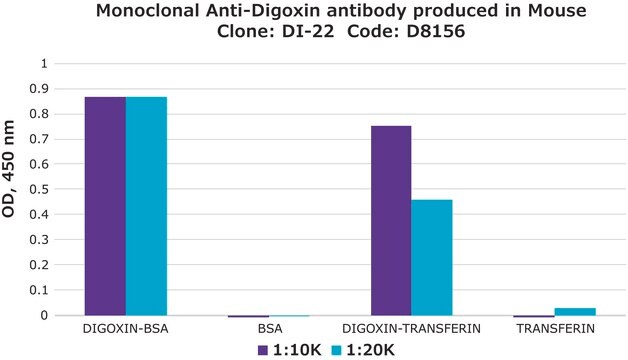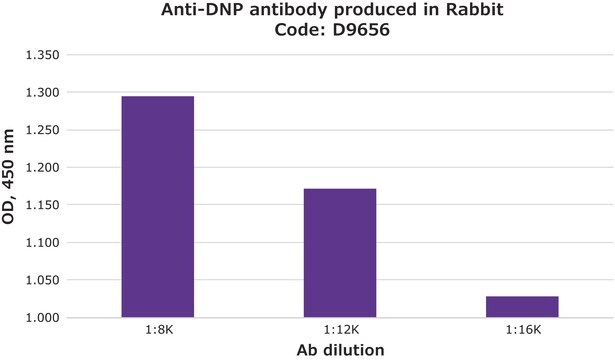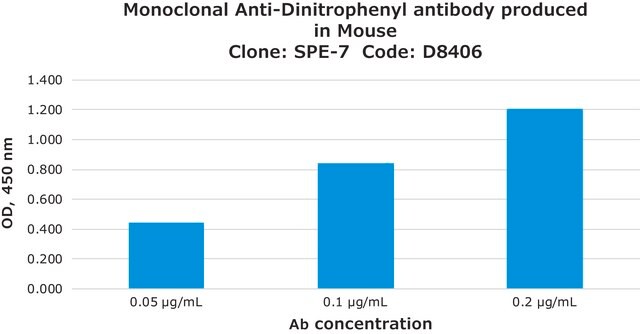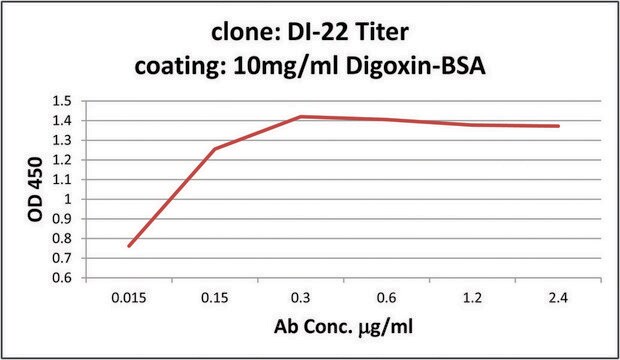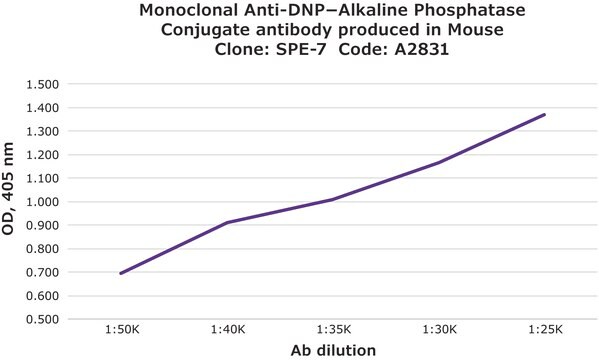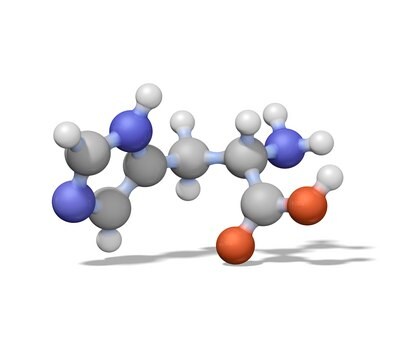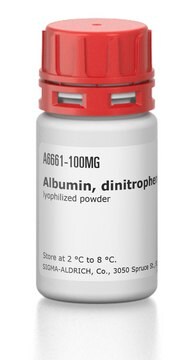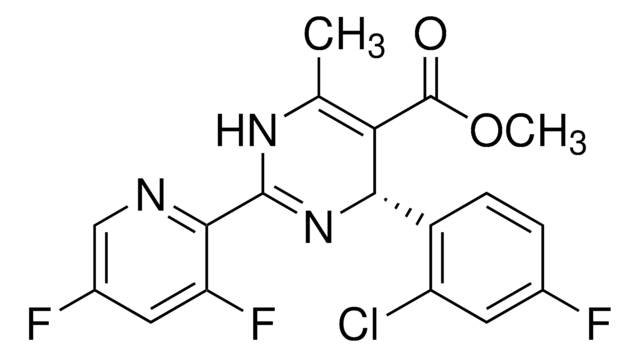D9781
Anti-DNP antibody produced in goat
whole antiserum
Synonym(s):
Anti-Dinitrophenol
Sign Into View Organizational & Contract Pricing
All Photos(1)
About This Item
Recommended Products
biological source
goat
conjugate
unconjugated
antibody form
whole antiserum
antibody product type
primary antibodies
clone
polyclonal
contains
15 mM sodium azide
technique(s)
indirect ELISA: 1:8,000
quantitative precipitin assay: 1.6-2.4 mg/mL
shipped in
dry ice
storage temp.
−20°C
target post-translational modification
unmodified
General description
Anti-dinitrophenyl (DNP) antibody is produced in goat using DNP-BSA as the immunogen. The antiserum has been treated to remove lipoproteins. The product is determined to be reactive with DNP-BSA and DNP-RSA but not BSA (bovine serum albumin) or RSA (rabbit serum albumin) by immunoelectrophoresis (IEP).
Immunogen
A DNP-BSA conjugate
Application
Anti-DNP antibody produced in goat has been used in DNA immunoFISH and for differential staining of blastocysts.
Anti-DNP antibody produced in goat was used to study the effects of IgE on the clustering of FcεRI by time-resolved phosphorescence anisotropy.
Preparation Note
delipidized
Analysis Note
Antiserum is tested for specificity and titer by immunoelectrophoresis and quantitative precipitin techniques.
Disclaimer
Unless otherwise stated in our catalog or other company documentation accompanying the product(s), our products are intended for research use only and are not to be used for any other purpose, which includes but is not limited to, unauthorized commercial uses, in vitro diagnostic uses, ex vivo or in vivo therapeutic uses or any type of consumption or application to humans or animals.
Not finding the right product?
Try our Product Selector Tool.
Storage Class Code
10 - Combustible liquids
WGK
nwg
Flash Point(F)
Not applicable
Flash Point(C)
Not applicable
Choose from one of the most recent versions:
Already Own This Product?
Find documentation for the products that you have recently purchased in the Document Library.
Customers Also Viewed
Miguel A Velazquez et al.
Biochimica et biophysica acta, 1864(2), 590-600 (2017-12-03)
Mouse maternal low protein diet exclusively during preimplantation development (Emb-LPD) is sufficient to programme altered growth and cardiovascular dysfunction in offspring. Here, we use an in vitro model comprising preimplantation culture in medium depleted in insulin and branched-chain amino acids
Jinming Song et al.
Biochemistry, 41(3), 881-889 (2002-01-16)
Rat mucosal-type mast cells of the RBL-2H3 line express a glycoprotein termed the MAst cell Function-associated Antigen (MAFA). When MAFA is clustered by its specific monoclonal antibody G63, secretion normally triggered by aggregating these cells' type I Fcepsilon receptor (FcepsilonRI)
M A Velazquez et al.
Human reproduction (Oxford, England), 31(9), 1970-1980 (2016-07-13)
Does advanced maternal age (AMA) in mice affect cardiometabolic health during post-natal life in offspring derived from an assisted reproduction technology (ART) procedure? Offspring derived from blastocysts collected from aged female mice displayed impaired body weight gain, blood pressure, glucose
Jinming Song et al.
Molecular immunology, 38(16-18), 1315-1321 (2002-09-10)
Clustering the mast cell function-associated antigen (MAFA), a membrane glycoprotein expressed on 2H3 cells, by its specific monoclonal antibody G63 substantially inhibits secretion normally triggered by aggregating these cells' Type I Fcepsilon receptor (FcepsilonRI). To explore possible MAFA-FcepsilonRI interactions giving
Shohreh Majd et al.
Current Alzheimer research, 15(8), 764-776 (2018-02-24)
Emerging evidence supports the hypothesis that metabolism dysfunction is involved in pathogenesis of Alzheimer's disease (AD). One aspect of metabolic dysfunction includes dysregulation of adenosine monophosphate kinase protein kinase (AMPK) and mammalian target of rapamycin (mTOR) metabolic axis, which is
Our team of scientists has experience in all areas of research including Life Science, Material Science, Chemical Synthesis, Chromatography, Analytical and many others.
Contact Technical Service